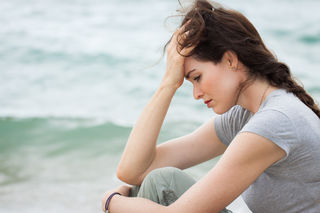Coronavirus Disease 2019
The Stages of Coping With the COVID-19 Pandemic
Adapting to this new way of life has been difficult.
Posted April 30, 2020 Reviewed by Ekua Hagan

Although some of us are lucky enough to quarantine in safe, loving homes and in places where we can enjoy beautiful weather, adapting to this new way of life has been difficult. For many, the issue of mental health makes this adjustment increasingly treacherous. Communicating with our therapists and patients at Casa de la Familia (CDLF) via Telehealth has brought to light a concurring pattern of emotional stages that many of us are going through as we navigate our new realities.
While it appears that the stages of coping with COVID-19 are experienced by people from all walks of life; the order, duration, and severity of which they are experienced differ from person to person.
The general pattern is as follows:
1. Panic
Panic is typically the first reaction after learning of a pandemic such as COVID-19. The level of panic can be particularly severe due to the magnitude of the situation as well as the fact that, for most of us, it is completely unheard of. The most common reactions of panic were:
Fear: Some people become emotionally paralyzed by fear, and their shock prevents them from being able to take action. Feeling impotent, vulnerable, and helpless are common during a pandemic.
Denial: For others, denial is a go-to defense mechanism to buffer the intensity of the uncertainty and fear that is currently in the air. Along this line is the reaction: “This is just a regular flu, and there is no need to overreact."
2. Action
Depending on personal and/or generational experiences, some people are rushing to stores to stock up on as many necessities as possible in fear of being left with nothing, like how apocalypses are portrayed in movies. For some, buying things provides a sense of control, security, and comfort, despite the threat of uncertainty this situation is imposing upon our world.
In another context, healthy coping responses allow people to tap into their creativity. Some have done research in hopes that they can uncover new, practical ideas to cope with the pandemic, such as breathing in steam from saltwater to kill the virus that is potentially in their bodies. Others sew masks and give them to their neighbors.
However, most of us know that the best thing we can do is stay home and follow the guidelines that have been set before us by our local legislators. For many dysfunctional families, this is not as easy as it seems. Meanwhile, social media has offered some emotional relief with the development of memes and jokes in which people express themselves and try to make light of the situation.
3. Confusion
As the severe aftereffects of the pandemic emerge, many people receive conflicting information about COVID from the government, scientists, researchers, and medical experts alike. Social media is chiefly responsible for spreading conspiracy theories that perpetuate this confusion. As a result, people are becoming confused and don’t know what to believe. Pre-existing distrust in the government and resentment for not receiving appropriate information lead many to ignore their precautions. As a consequence, people search for information in different channels and inadvertently find themselves in an obsessive search for answers. As there is no single trustworthy line of information, widespread anxiety continues to develop.
4. Anxiety and Depression

Our world is experiencing a shared sense of loss for the life we once knew. This creates anxiety and depression, and can trigger previous emotional coping mechanisms and behavioral patterns that no longer serve us. While staying home (for most of us) is the most viable measure of precaution we can take, the calamity that is happening within our minds can consume us. From an anthropological standpoint, we as humans are interdependent by nature, and the demands of having to socially isolate are contrary to our innate needs and experience. As a prolonged amount of time has passed, many of us are losing our sense of connection and vitality as we refrain from interacting with others. This is further exemplified by the visceral and emotional benefits we were once privileged enough to experience by giving hugs. Many of us are also dealing with the heartache of not being able to be around loved ones who have consistently provided us with the solace we need.
5. Anger
Waiting at home for this silent killer to vanish from the Earth is becoming increasingly tedious, uncomfortable, and at times, aggravating. The stark uncertainty and vulnerability surrounding us indubitably leads to frustration and anger. Such anger may be directed towards those around us at home or towards politicians, pharmaceutical companies, scientists, or whoever we perceive is causing us pain. Anger has been expressed in demonstrations by protesters who are asking the government to end the lockdown and restore public freedom despite evidence that we as a society are not ready for these measures.
6. Adaptation
Lastly, many people have been able to adapt and wait for resolution in hopes of either returning to normalcy or embarking on a new beginning. This stage will depend on personal pre-pandemic experiences as well as a person’s respective experience coping with the pandemic. It will either be something remarkable or an extremely traumatic experience; especially for medical workers on the frontline, those working in the news, those who’ve lost family members to the virus as well as law enforcement officials. The complexities of families might change, and a new order might be established. While we don’t know what the future holds, we can ultimately still find ways to look to each other for hope.




